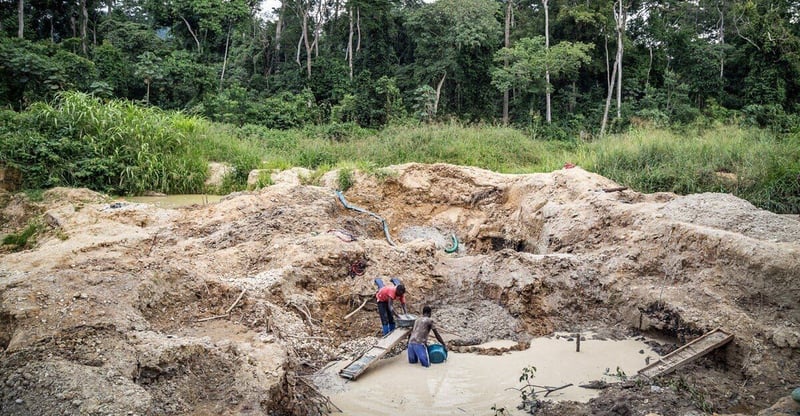Illegal Mining - A Key Risk To Tailings Dams Management And Mine Closure
Submitted by: BizCommunity Editor Save to Instapaper
Source: © Impact Impact SRK Consulting considers the risk that illegal artisanal miners pose in the management of tailings dams in many parts of Africa
The same TSF risks that face nearby communities could then apply to these miners.
James Lake, partner and principal environmental scientist at SRK Consulting South Africa (SA), explains that TSFs, as part of a mine’s lease area, are usually well protected by security infrastructure and services during the mine’s operational years.
However, the risks related to unauthorised access tend to escalate post-closure.
“In Tanzania, for instance, we have witnessed artisanal miners on a TSF, where the tailings were also being removed for use as construction material,” he says.
In SRK’s experience, mines often create ‘attractive nuisances’ after they close, such as pit gathering water that attracts wild animals.
Similarly, a TSF still containing known minerals would attract illegal miners, who could put themselves at risk and perhaps endanger the structure.
Global Industry Standard on Tailings Management
This illegal mining is also a risk that needs attention in terms of the Global Industry Standard on Tailings Management (GISTM).
Based on her work in the Democratic Republic of Congo (DRC), SRK Consulting South Africa (SA) principal environmental engineer Roanne Sutcliffe explained some of the risks associated with managing TSFs after mine closure.
“In one site, it was clear that artisanal miners were walking over a tailings dam each day to reach discards which were still considered to have some mineral value,” says Sutcliffe.
“They would then wash the ore in the supernatant pond on the TSF; this sort of activity could have health and safety implications and could impact the stability of the TSF.”
In another case, there was evidence of artisanal mining on a mineral seam which was not only adjacent to a TSF but which also ran under the TSF’s foundation.
Post-closure activity close to a tailings dam was itself a potential risk, while any mining underneath the structure would compromise its stability and pose life-threatening risks.
“The GISTM highlights that mitigating TSF risks is a responsibility that extends for tens or even hundreds of years after mines cease operations,” she says.
“This means finding sustainable solutions and post-closure uses that address the considerable risks posed by ongoing artisanal mining.”
Latest Press Articles
- Astron Energy Partners With 2025 Comrades Marathon
- Meet The People Acquires Yeoman Technology Group
- Effie Awards South Africa Announces 2025 Jury Panel
- Broadsign Unveils Automated In-advance Dooh Transactions
- Honouring The Youth- A Celebration OF Courage, Commitment, And Change
- Who Owns Digital? New Model Emerges As Marketing, Finance And Operations Must Share Stewardship
- Sportsbet.IO Appoints Five New Ambassadors
- Get Ready TO ACE Your Marketing Game!
- Caster Semenya, Gerda Steyn Partner With OMO TO Champion Resilience At Comrades Marathon
- SA Safari Lodges Lead Solar Shift TO Future-proof Tourism
- Transform Your Business Culture Through Customer Experience
- Why A Sick Note Won'T Get You Out OF A Disciplinary Hearing
- SA Rolls Out First Mass Poultry Vaccination TO Curb Avian FLU
- African Energy Week (AEW) 2025 African Energy General Counsel Forum TO Spotlight Strategic Legal Leadership, Dealmaking And Doing Business In African Oil & GAS
- Natural GAS And Africa’s Energy Future- Balancing Growth And Sustainability (by Adrian Strydom)
The Pulse Updates
- Xlink Crowned Technology Company Of The Year At The Africa Tech Week Awards 2025 (June 5, 2025)
- Celebrate International Day Of Play With The Weirdest (and Most Wonderful) Toys Of 2025 (June 4, 2025)
- Switching On The Future - Landmark Electricity Expo Comes To Joburg (June 3, 2025)
- Timeless, Bold, And Distilled With Care - Just Like Dad (June 2, 2025)
- New Report Reveals Msme Funding Realities In South Africa – And What Must Change (May 30, 2025)
